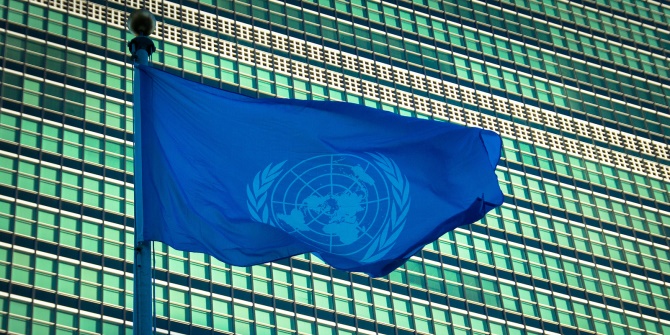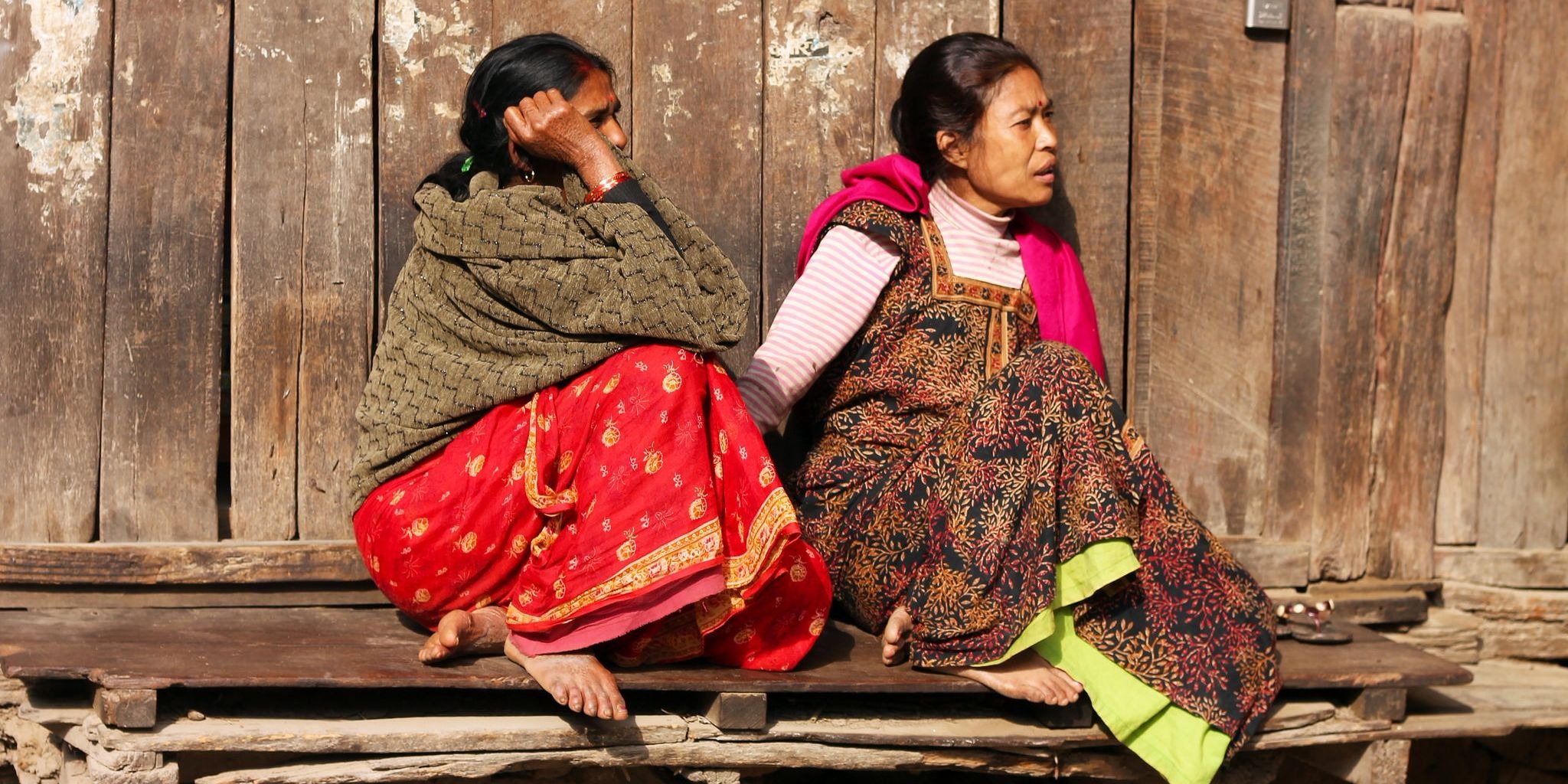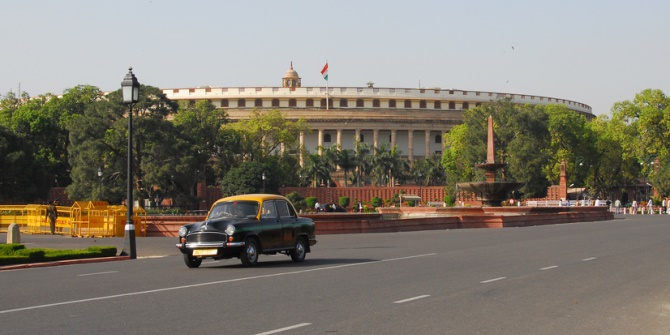
 Deepanshu Mohan and Tridivesh Singh Maini explore the weaknesses of India’s current relationship with Latin America and identify opportunities that could prove mutually beneficial. They argue that improvements can only be achieved if India moves beyond multilateral instruments and seek to develop relations with individual countries in Central and South America.
Deepanshu Mohan and Tridivesh Singh Maini explore the weaknesses of India’s current relationship with Latin America and identify opportunities that could prove mutually beneficial. They argue that improvements can only be achieved if India moves beyond multilateral instruments and seek to develop relations with individual countries in Central and South America.
Last month, Christine V. Gomes wrote a piece in the Americas Quarterly policy journal entitled “Is 2015 the year for India in Latin America?”, yet in recent years India has paid limited attention to the Latin America countries (LACs). One of the major failures in India’s foreign policy towards the region has been its dependence upon multilateral instruments like the BRICS, and the lack of emphasis on bilateral co-operative engagements. This is evident from the absence of bilateral trips made by Indian leaders since Indira Gandhi’s tour of 1968.
The last ten months have been fruitful for India’s foreign ministry and policy due to the multiple bilateral and multilateral exchanges. Of course, the proactive approach of the Prime Minister’s Office and Narendra Modi himself has been significant in increasing Indian presence within South Asia, BRICS, APEC (as an observing member) and enhancing relationships with individual countries like the US, Russia, the UK and Australia. However, there remains immense scope for PM Modi to accelerate the level of engagement with Latin America, and look at the region beyond the lens of multilateralism.
Unlocking potential opportunities
India is a country relatively poor in natural resources and abundant in labour whereas the LACs are generally the opposite. If we look at the terms of trade between India and countries in Latin America, there has been a noted increase with trade flows exceeding $40 billion as of 2013-2014 in comparison to $30 billion in 2010-11, but in terms of tapping potential growth opportunities amongst them there is clearly a lot more to be done. Even with Brazil, which India has closer ties with as a result of the BRICS association, the trade figure stands at a meagre $10 billion.
Food security is a powerful factor that could drive India to deepen its engagement with the Latin America region, which has vast swathes of fertile land. Brazil, for example, is an agriculture superpower with rolling acres of arable land and also equipped with cutting edge food storage technologies. Argentina, too, is a leader in agricultural research. Latin America has also emerged as an important source of hydrocarbons for India in the last few years, with the region contributing around 10 per cent of India’s energy imports. India is set to step up collaboration with Brazil in the area of eco-friendly ethanol and Venezuela, Colombia, Mexico and Cuba are important suppliers of oil to India.
Looking back at trade balances, the sheer size of India’s demography makes large-scale imports of natural resources, particularly of agricultural goods, almost inevitable. This is especially the case given the low levels of per capita consumption of those goods, some of which classify as the LACs’ main exports (soybean oil from Argentina; refined copper, copper ore and chemical woodpulp from Chile, to name a few). In addition to this, consumer preferences and the existence of mid-size economies serve as significant incentives for trade.
However, while China has been able to tap into these opportunities effectively, India has not. There are a number of lessons that can be learned from China, which has rapidly expanded its presence in the region by building on better trade practices with countries like Argentina, Mexico, Chile and Brazil in particular (83 Billion USD, 2013-14). India’s exports cover 70% of the manufacturing items imported by LAC (2006 WTO data), but this still falls short of China’s 92%. What India currently lacks is a manufacturing sector that can match China’s supply capacity, efficiency and diversification. China’s expansion in the LACs has also been supported by the leadership’s pro-active approach to engagement with the region. In 2013, President Xi visited Central American countries and in 2014, Xi visited Venezuela, Argentina and Peru. He held also bilateral meetings with the Brazilian President Dilma Rouseff in addition to attending the BRICS Summit.
Beyond trade, there is a critical need for India and the LACs to look into potential areas of partnership across areas like education, improving cross-cultural exchanges through business and understanding each other’s institutional environment and operations. India should promote knowledge transfer with respect to building institutions that are based on a democratic, independent working model guided by a strong rule of law. This could give India an edge over China which is known for pursuing Beijing’s vested interests when building cross-country partnerships (case in point: the use of chequebook diplomacy in African countries).
There is also scope for knowledge exchange in the banking sector. Colombia’s Central Bank, Banco de Republica and Brazil’s Banco Central do Brasil have, like the Reserve Bank of India, been exceptionally good in the region in managing an effective monetary policy (targeting inflation) and the exchange rate (particularly pesos to USD for Colombia) over the last 4-5 years. This explains these economies’ good export record over the years despite being gravely affected by a number of crises within Latin America (particularly during the late 1980s) and the spill-over effect from the recession in the US and Europe. For the LACs’ skewed export-led growth model, effective exchange rate management and inflation targeting holds the key to ensuring persistent long term growth.
Completing the missing story
In the first half-century after Indian independence in 1947, India and the Latin American nations were both physically distant and belonged to different ‘clubs’, rarely engaging each other. India was a member of the British Commonwealth and a founding member of the Non-Aligned Movement (NAM), neither of which had a significant Latin American presence. Indians thought of Latin American nations as unstable and plagued by coups, earthquakes and inflation. Latin Americans were shocked by India’s rampant poverty and internal conflicts.
Since then both India and Latin America as a region have witnessed significant changes but relations between the two have not caught up. There is thus a serious need for India in expanding trade and commerce across the Latin American region, while exploring the possibility of ‘multi-layered’ diplomacy and also developing relations in other ways. Just as the Chinese have set up Confucius Institutes, India should consider building cultural centers that can help in building better cross cultural communication across the countries (in particular catering to the linguistic divide). Also, the possibility of using trilateralism as a tool to improve upon its existing presence in the Latin American region can be considered. This would allow, for example, the US and India to identify possible areas of cooperation in Latin America.
Image credit: flickr/GovernmentZA
Note: This article gives the views of the author, and not the position of the India at LSE blog, nor of the London School of Economics. Please read our comments policy before posting.
About the Authors
 Deepanshu Mohan is a regular columnist for India At LSE and Senior Research Associate at the Jindal School of International Affairs, O.P. Jindal Global University, India. He graduated from LSE with an MSc. in Economic History in 2012.
Deepanshu Mohan is a regular columnist for India At LSE and Senior Research Associate at the Jindal School of International Affairs, O.P. Jindal Global University, India. He graduated from LSE with an MSc. in Economic History in 2012.
 Tridivesh Singh Maini is a Senior Research Associate with The Jindal School of International Affairs, OP Jindal Global University, Sonepat, Haryana. His research interests include Indo-Pak relations, the role of border states in India’s foreign policy and the New Silk Road. Mr. Maini has also been a regular contributor for The Millenium Post (New Delhi),The News (Lahore), The Friday Times (Lahore), The Global Times (Beijing) and The Diplomat.
Tridivesh Singh Maini is a Senior Research Associate with The Jindal School of International Affairs, OP Jindal Global University, Sonepat, Haryana. His research interests include Indo-Pak relations, the role of border states in India’s foreign policy and the New Silk Road. Mr. Maini has also been a regular contributor for The Millenium Post (New Delhi),The News (Lahore), The Friday Times (Lahore), The Global Times (Beijing) and The Diplomat.








Very good advice to Indian Govt. and the people of India in this comprehensive Article. The one caution I will sound is that India must evaluate carefully importing agricultural produce and processed products from Latin America as many countries there are reported to have succumbed to genetically modified crops; and certainly not their cattle rearing model for meat consumption.
On the positive side one more idea to pursue is the bonding of the people of Latin America who are gradually becoming aware of their indigenous cultures eradicated by colonial Christianity.
R.Venkatanarayanan